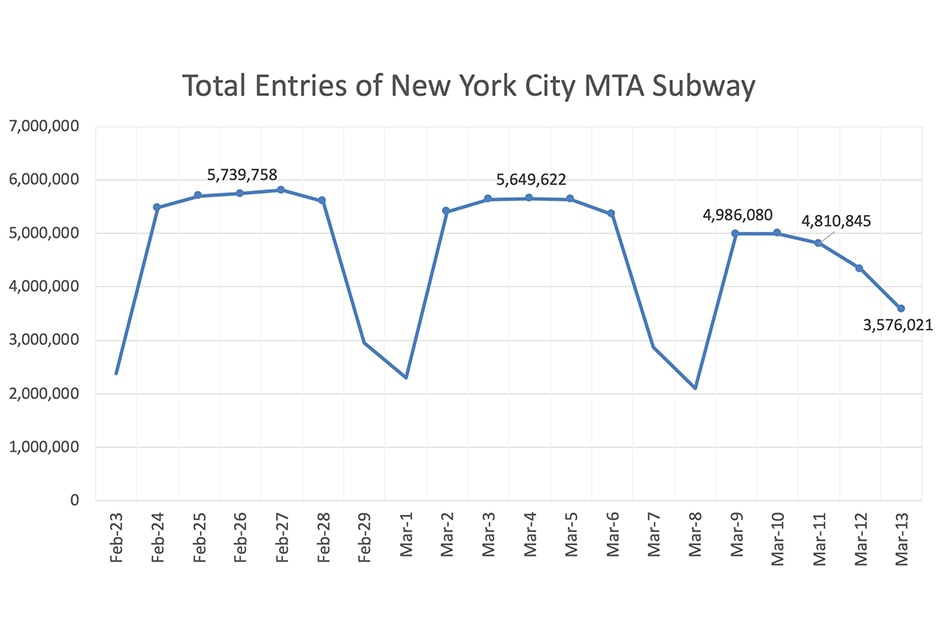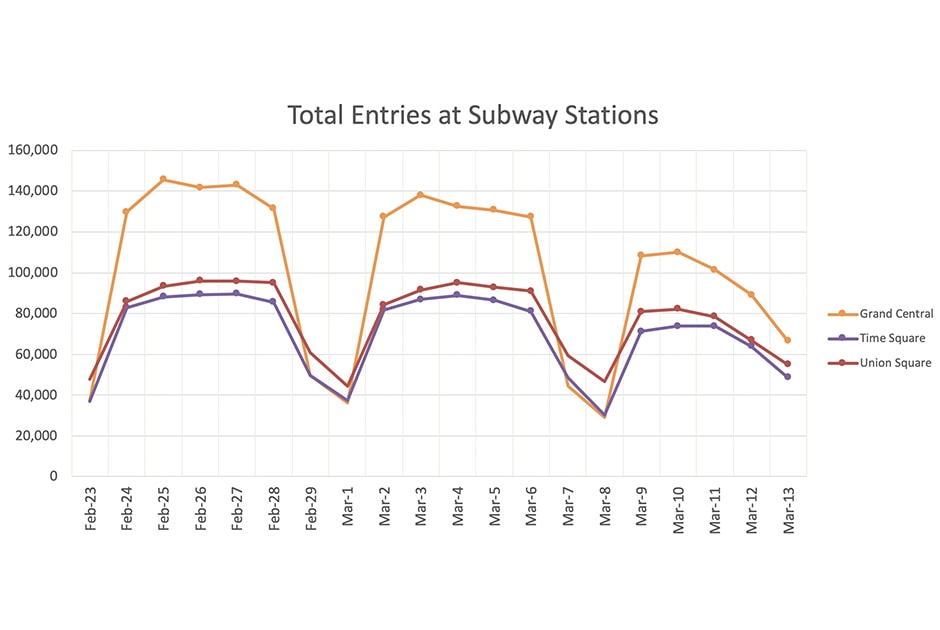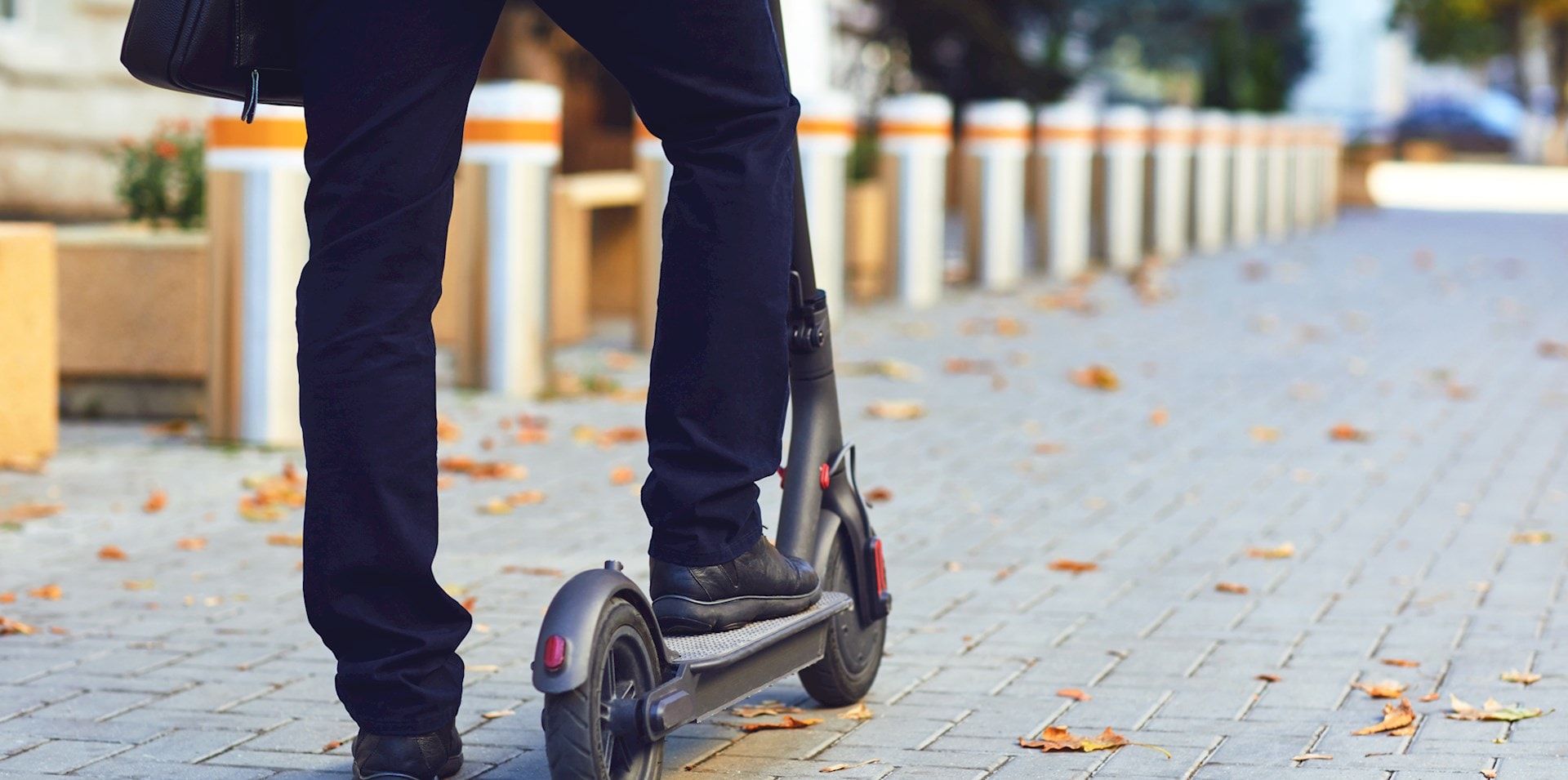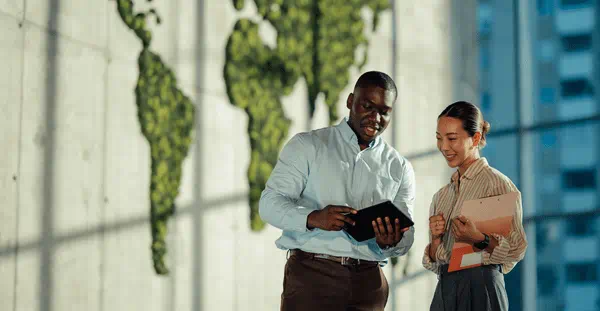COVID-19 has impacted our lives in ways that were unimaginable just a few weeks ago. It is paramount the spread of the virus be contained, so city leaders and policymakers have been focused on a broad suite of actions including steps to achieve social distancing. Some cities are even making the hard choice to discourage public transit, because the benefits outweigh the risks of virus spread.
For example, in New York City, leaders have discouraged riding public transit, and the results speak for themselves. The plot below, based on public data from the NYC subway system, shows almost a 40% decrease in ridership over the past three weeks. A 40% drop in NYC translates to more than two million people needing to choose another way to get to work, shop, or otherwise move around the city.


This trade-off, between discouraging public transit and reducing virus transmission, will be debated intensely over the coming months.
But how can city leaders prevent the spread of the virus while simultaneously allowing people to travel?
Increase micromobility services
Despite a lockdown in many areas, a large number of people still have to go to work without a car and given the current situation, do not feel comfortable taking mass transit. Now more than ever, micromobility is turning out to be a preferable option – this includes bikes, scooters and mopeds. Are cities ready to invite private companies to launch immediate and temporary dockless micromobility programs on a large scale? In addition to existing requirements around safety, equity, data privacy, etc., cities should now also request additional measures to ensure sanitizing micromobility devices and more frequent rebalancing.
Provide hierarchical transporting systems and standardized disinfection
Micromobility is excellent but it cannot solve the problem for everyone. The elderly and people who are sick are encouraged to stay at home during this health crisis. But what if people need to see a doctor? Or what about doctors themselves and other people who are at risk of contagion, how are they to travel to work without personal vehicles? Although taxis and ride-hail vehicles are all sanitizing their cars, it may not be enough. Cities have an opportunity to set up temporary locations, possibly at currently underused airport parking lots, where standardized disinfection can be applied. These certified vehicles can then be tiered for special pickup of at-risk or critical individuals.
Set up delivery hubs at the neighborhood level
While people are rushing to stores to stock up food and toilet papers, the e-commerce and delivery industry is booming with an overload of demands and challenges. Currently, the National Guard is delivering food for people in the containment area in New Rochelle, a suburb north of New York City. But how will this service be maintained if more areas are locked down and all the necessities depend on delivery for tens of thousands of people, or even millions? One way is for cities to set up delivery hubs at the neighborhood level. If packages can be consolidated at the neighborhood hub, and then be distributed by the last-mile delivery service within the couple blocks, it may be a triple win. Firstly, logistics firms can share resources to deal with operational capacity challenges. In essence, not all of them need to deal with last-mile delivery, which is the most time-consuming mile in the supply chain. Secondly, residents can reduce the amount of interactions with delivery staff. Thirdly, with efficient logistics delivery services, cities can reduce truck traffic and get closer to their sustainability goal even after this emergency.
Nobody can predict how long this pandemic will last and what the full effects will be. So cities have to think outside the box and make sure they are doing their best to ensure their citizens can still get from point A to point B as efficiently and safely as needed.






